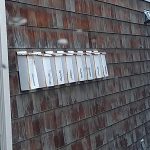
It is both dangerous to public dialogue and frustrating for everyone when one city councillor’s explosive opinion is taken as fact. The fact is that there is no plan to systematically remove cherry trees, never to plant another in the city. The cherry blossom trees are part of our charm as a city and are a welcome and delightful sign of spring to locals and visitors alike. In addition, they are a key part of our cultural heritage, a symbol of our strong connection with the Japanese community as well as with Victoria’s Twin City, Morioka Japan. Next year is the 35th anniversary of our twinning. I had been planning to propose the first annual Victoria Hanami Festival to mark the occasion.
Cherry trees have long been a high-profile part of the local urban forest and City Parks Staff believe they may continue to thrive in locations with appropriate conditions. Ornamental flowering cherry trees require a moderate to high available water requirement during the growing season. With climate change modelling showing drier, warmer summers, staff expect that they will not be a good species for all of the locations where they presently are growing. Staff continue to plant some cherry varieties where they may do well. These areas typically have good soils and more available water during the summer. In 2017, the City planted 20 ornamental flowering cherries and 20 ornamental flowering plums as part of our tree planting program.
In response to the recent inquiries and media attention relating to the City’s management of the urban forest, it is important to share the wider context in which staff make decisions about which trees to plant where in light of the changing climate.
The effects of climate change over the past several years are being seen in many areas of the city. Our staff have observed this, and in particular the professionals who oversee the urban forest have raised concerns about the impact of hotter, drier summers, strong winter storms, introduced insects, and the resilience of urban trees.
Over the past four years, staff have conveyed to Council necessary updates in operational practices intended to mitigate against risks and effectively steward the living assets under our care. Last week, Council asked our Director of Parks, Thomas Soulliere some specific questions about the additional investment in urban forest management and potential outcomes, including loss of ornamental trees.
During this exchange, Soulliere attempted to convey the staff experiences to-date regarding the importance of tree inspections, which are key to monitoring tree vitality and also to protecting the public (individuals and property) from trees in declining health. While the focus of his responses was the overall approach to implementing the approved City Plan, it seems as though some of his comments may have been interpreted to suggest that an entirely new direction was being contemplated. It is not.
To be clear, the City only removes trees on public property if:
- There is evidence the tree is causing significant damage or is endangering the
- The tree is dead or dying
- The tree is required to be removed to accommodate another approved initiative (ie. land-use change, infrastructure upgrade)
When trees must be removed, the approach to replanting always considers finding the most appropriate tree for a given location. For at least the past 15 years, staff have had to look at alternative species when planting or replacing trees. Gone are the days when a tree is replaced automatically with the same species that was removed.
Tree planting is a big investment and selecting a species that will establish and grow with good vitality in the location is an important, and at times challenging decision. Staff consider all of the restrictions of the site: physical space, soil volumes, overhead or underground services, soil quality, site exposure, expected available water, site levels of wind and sun, and aesthetics play a part in tree selection for a given location. Staff typically first consider the existing tree varieties on the boulevards, however, the street tree varieties have been changing and evolving on many streets for years.
If staff reached a point where their professional recommendation included an option to phase-out any of the iconic species of trees in the municipality, Council would certainly be engaged in a dialogue in advance.
What Council is doing is finally making a significant annual investment – $850,000 per year starting this year – in the Urban Forest Masterplan. The plan was adopted by Council in 2013 and never properly resourced. As as result of the investments, this year and in the coming years, staff will be able to take better care of trees on public land, plant more trees, plan for the future, and also turn more attention to retaining trees on private land, which account for two thirds of the urban forest canopy. This is a legacy we will leave for future generations.




